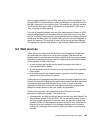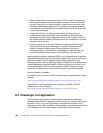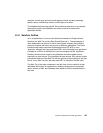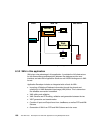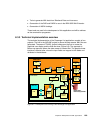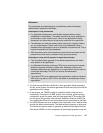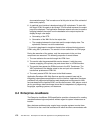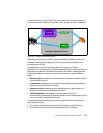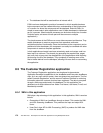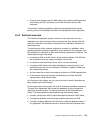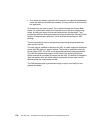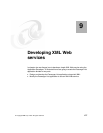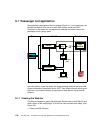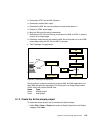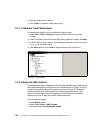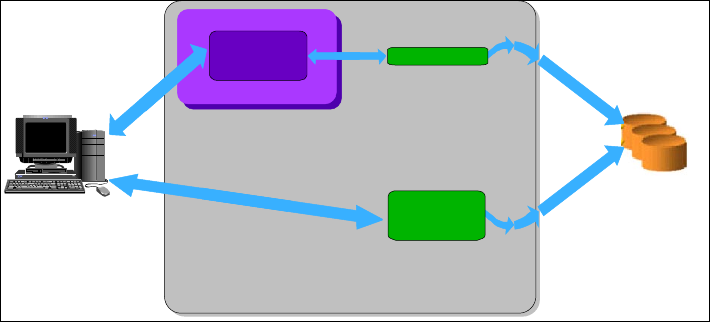
Chapter 8. WebSphere and XML approaches 173
an application server (Figure 8-3). The server uses specific business logic and
communicates with some form of persistent data storage, typically, a database.
Figure 8-3 Enterprise Application Server
Depending on what type of client is used, an additional, middle tier may exist
between the client and the application server (for example, a Web server to
provide dynamic HTML).
Developing the
middle tier has always been the costly part of system
development. In a perfect world, the developer would only be concerned with the
business logic required to implement the system. But without technologies like
Enterprise JavaBeans, developers also need to be expert in several different
areas:
Business logic: Developers must understand the business problem and the
logic required to solve it.
Transactions: Developers must correctly group different areas of business
logic into specific transaction contexts.
Database access: Developers must understand how to gain access to a
database for retrieving and updating information.
State management: Developers must understand how to use
multiprocessing capabilities so different sections of the business logic can be
run concurrently to optimize performance.
And while developing the code for the server application, the developer must
also take into account:
The client and communication protocol to be used to access the server.
The application server that will be used and the APIs it supports.
Customise
Catalog
Membership
Web Service
Interprise Application Server



